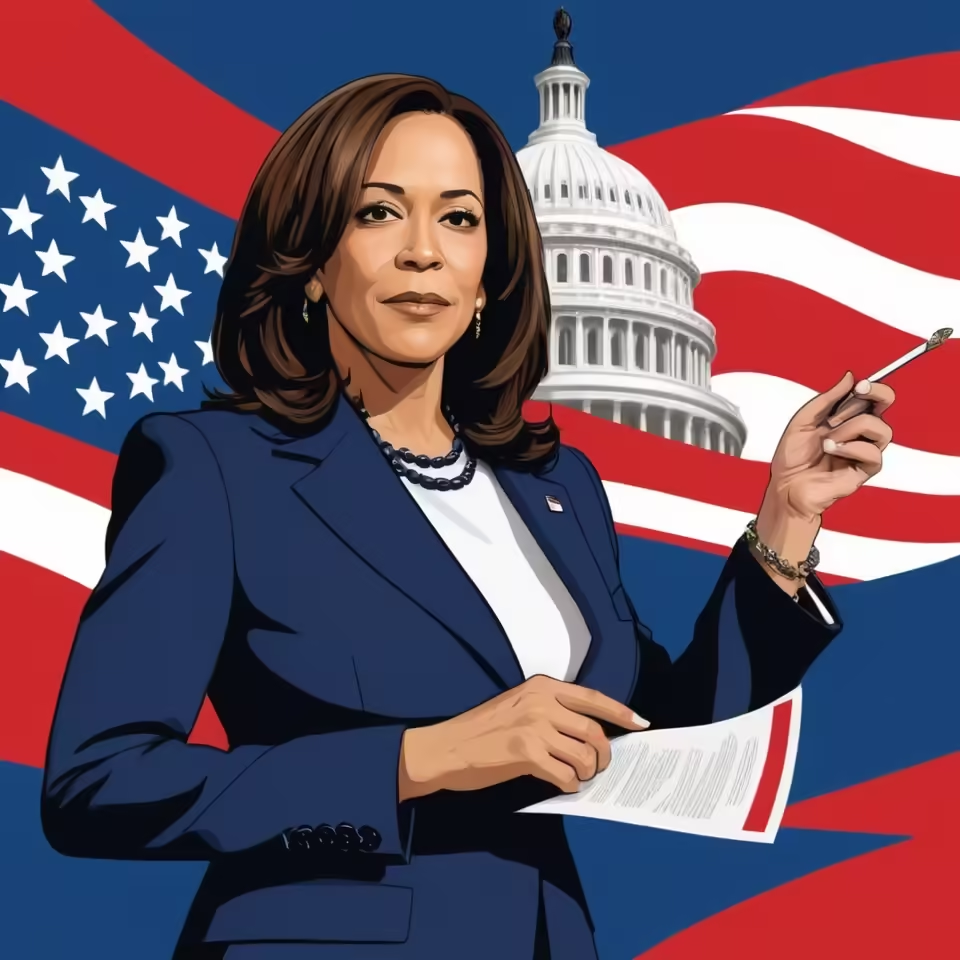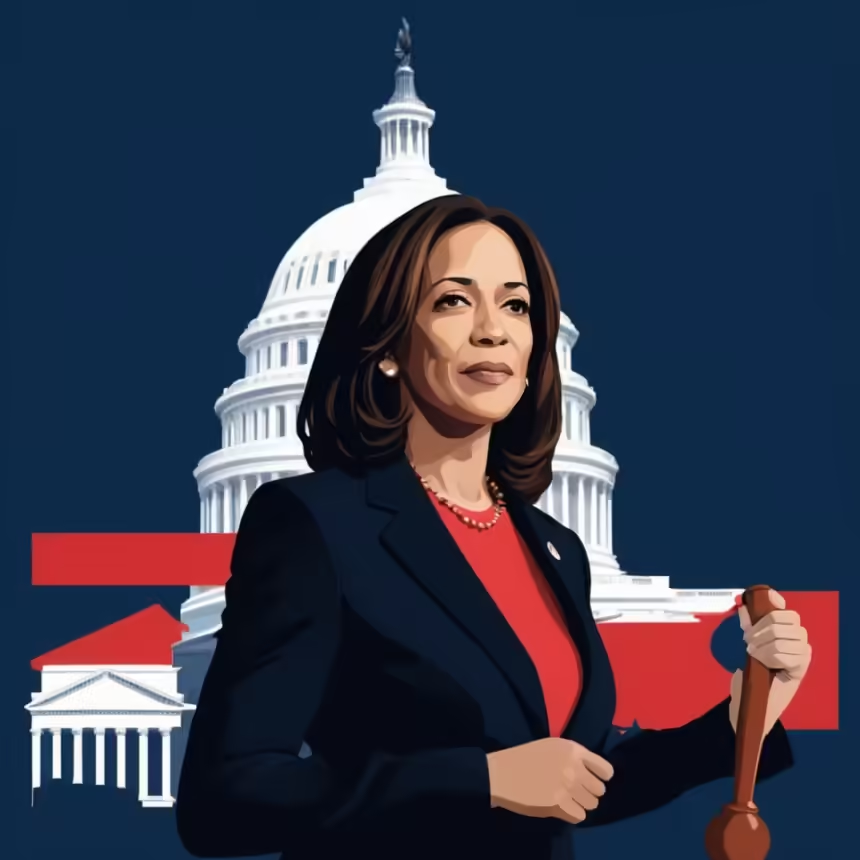Understanding Kamala Harris political landscape is essential as she plays a pivotal role in shaping national policies as Vice President. Vice President Kamala Harris, with her multifaceted career, stands at the forefront of political discourse. From her early days as a prosecutor to her current role as Vice President of the United States, Harris’s political journey has been both inspiring and contentious. This article takes a deep dive into her political history, analyzing the connections between her past actions, current policies, and future aspirations. The goal? To empower readers to make informed decisions as the political future unfolds, particularly as the 2024 elections loom on the horizon.
Sources + Resources
- Kamala Harris – Wikipedia
- The Vice President Biography – whitehouse.gov
- Kamala Harris – Britannica
- $25-billion foreclosure settlement was a victory for Kamala Harris in California, but it wasn’t perfect – Los Angeles Times
- By the Numbers: Mortgage Relief Across California – The Fourth Report of the California Monitor (September 24, 2013)
- The Political Speeches of Kamala Harris: A Linguistic Analysis

Kamala Harris Political Landscape: Early Career and Advocacy
Kamala Harris began her career in the San Francisco District Attorney’s Office, where she quickly gained recognition for her focus on vulnerable communities. Her advocacy for the rights of marginalized populations was evident in her creation of specialized units aimed at addressing issues like hate crimes and sexual violence. These early initiatives set the stage for what would become a hallmark of her political career—an unwavering commitment to social justice.
One of the landmark pieces of legislation she championed early on was the Guaro Justice for Victims Act, a law that aimed to improve the lives of crime victims by increasing access to legal resources. This act highlighted her dedication to the most vulnerable, a theme that has echoed throughout her career. Harris’s focus on social justice early on was a sign of her future priorities, which would later be reflected in national policies addressing racial and economic inequalities.
Kamala Harris Political Landscape as Attorney General
Harris’s tenure as the District Attorney of San Francisco was marked by both praise and controversy. On the one hand, she launched an innovative re-entry program for drug offenders, emphasizing rehabilitation over incarceration. This program, lauded for its success in reducing recidivism rates, demonstrated her forward-thinking approach to criminal justice reform. In a country grappling with overpopulated prisons and strained legal systems, this initiative was seen as a breakthrough, positioning her as a progressive voice on criminal justice.
However, Harris’s tenure was not without its missteps. Her introduction of a truancy policy, which threatened legal action against parents whose children consistently skipped school, sparked outrage among many in the community. Critics argued that the policy disproportionately affected low-income families, punishing parents who were already struggling to make ends meet. Harris defended the policy, stating that it was designed to combat systemic issues in education, but the controversy highlighted the fine line between well-intentioned reforms and their unintended consequences.
Attorney General: Navigating a Larger Political Arena
After her tenure as District Attorney, Harris’s political career expanded when she became California’s Attorney General. This role provided her with a larger platform to address issues affecting not just San Francisco but the entire state. One of her most significant achievements was securing a $25 billion settlement for homeowners affected by the foreclosure crisis, a move that positioned her as a champion of middle-class families facing financial ruin.
Still, this accomplishment wasn’t without criticism. Some argued that the settlement, while monumental in scale, did not go far enough in providing meaningful relief for the individuals most severely impacted by the crisis. Harris’s response to these critiques was rooted in pragmatism—acknowledging the limits of what could be achieved within the legal framework while expressing a desire to continue fighting for broader reform.
Additionally, during her time as Attorney General, Harris pushed for stronger privacy protection laws, recognizing the growing risks in the digital age. Her efforts in this area laid the groundwork for future legislative efforts to protect personal data, an issue that remains at the forefront of political debate.

US Senator: Embracing the National Stage and Controversial Issues
Kamala Harris’s transition to the national stage came when she was elected as a US Senator from California. Her time in the Senate was marked by her vocal advocacy on a range of controversial issues, solidifying her position as a progressive leader. She took a strong stance on gun control, advocating for tighter regulations in response to increasing gun violence across the country. Similarly, her support for the DREAM Act, which sought to protect young immigrants brought to the US as children, earned her praise from immigrant rights groups.
Harris also championed the legalization of cannabis, a stance that reflected the growing national support for ending the War on Drugs. However, this position placed her at odds with more conservative voters, illustrating the challenges of appealing to a broad constituency while holding firm on progressive values.
One of the defining moments of her Senate career was her vocal opposition to the Muslim travel ban, which she argued was discriminatory and un-American. Harris’s willingness to take strong stances on divisive issues gained her both admiration and criticism. While her advocacy solidified her base among progressives, it also alienated certain segments of more moderate and conservative voters.
Confirmation Hearings: A Masterclass in Political Theater
During her time as a senator, Harris gained significant attention for her assertive style during high-profile confirmation hearings. Her questioning of Attorney General Jeff Sessions and Supreme Court nominee Brett Kavanaugh showcased her prosecutorial background and highlighted her no-nonsense approach to political debate. Her grilling of Sessions, in particular, became a viral moment, with many praising her for holding powerful figures accountable.
However, Harris’s aggressive approach also drew criticism from some quarters, with detractors accusing her of grandstanding for political gain. Regardless of how her tactics were perceived, there is no denying that these moments helped cement her public image as a fearless advocate for her beliefs.

Economic Vision: Promises of Prosperity and the Need for Scrutiny
As Vice President, Harris has promoted a vision for what she calls an “opportunity economy,” promising prosperity for working-class families through a series of tax cuts, healthcare reforms, and economic support measures. These promises have been outlined in policy proposals aimed at addressing the growing concerns about income inequality and economic instability.
However, an economic analysis of these proposals reveals some important caveats. While the projected outcomes suggest higher growth, controlled inflation, and a reduced deficit, critics have called for greater scrutiny of the underlying assumptions. It is crucial to question the feasibility of these projections, especially in light of the complex economic challenges facing the country.
Conclusion: Empowering Voters Through Informed Decision-Making
Kamala Harris’s political journey is one that reflects both the complexity and the contradictions inherent in a career spent navigating public office. From her early days as a prosecutor to her current role as Vice President, she has been a figure of both progress and controversy. Through a critical examination of her career, voters can gain a clearer understanding of her values, policies, and potential for future leadership.
As the country moves toward another pivotal election season, it is essential for voters to move beyond surface-level perceptions and engage in informed analysis. Kamala Harris represents a politician who, while imperfect, has consistently sought to advocate for change. The question for voters is not whether she has made missteps along the way, but whether her vision for the future aligns with their own.
FAQs
What was the $25 billion foreclosure settlement?
The $25 billion foreclosure settlement was a landmark agreement reached in 2012 between the federal government, 49 states, and five major mortgage servicers. It aimed to provide relief to homeowners who had been affected by abusive lending and foreclosure practices during the housing crisis.
What role did Kamala Harris play in the settlement?
Then-California Attorney General Kamala Harris played a crucial role in securing a favorable settlement for California homeowners. She initially withdrew California from the national settlement negotiations, arguing that it did not provide sufficient relief for Californians. Her tough stance led to a separate agreement that allocated $12 billion in homeowner assistance to California, the largest share of any state.
Why did some people criticize the settlement?
Despite its benefits, the settlement faced criticism from some quarters. Some argued that it did not go far enough in holding banks accountable for their wrongdoing, while others felt that the relief provided to homeowners was insufficient. Additionally, there were concerns that the settlement did not address the root causes of the housing crisis.
Were any bankers held accountable for their actions?
One point of contention was the lack of criminal prosecutions of bankers involved in the mortgage crisis. While the settlement provided financial relief, it did not lead to any significant legal repercussions for those responsible for the fraudulent practices that contributed to the crisis.


Leave a Reply